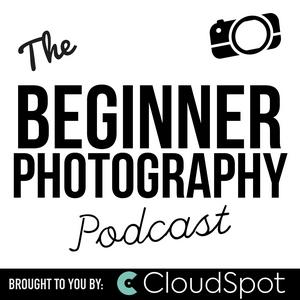What Baseball Taught Me About Photography
#588 In this episode of the podcast, I dig into what baseball has taught me about becoming a better photographer. At first glance, these two worlds might seem unrelated, but I quickly realized that the secret to growth in both comes down to the quiet, persistent practice—those thousands of unseen reps that prepare us for our “big game” moments. I share stories from the baseball world, like Dodgers legends Freddie Freeman and Cody Bellinger, as well as insights from head photographer Jon Soohoo, drawing parallels to our photographic journey.KEY TOPICS COVERED The Importance of Consistent Practice (Reps) - Drawing inspiration from baseball, Raymond explains that greatness comes not from isolated performances, but from thousands of unseen, intentional repetitions. Photographers should practice regularly—not just at special events—to develop instinct and technical fluency.Learning From Failure and Tracking the Right Stats - Baseball legends, who "fail" most of their at-bats, exemplify that success includes and even requires frequent failure. Similarly, not every photo will be a winner, and that's normal. Raymond recommends tracking progress by the number of photos taken or personal growth, not likes or follows.Growth Through Community and Feedback - Community is vital, just as team dynamics support baseball players. Photography communities (like the podcast’s Facebook group) offer constructive feedback and support, accelerating learning compared to going solo. Having a mentor or a coach provides targeted insight for growth.IMPORTANT DEFINITIONS & CONCEPTSReps (Repetitions): Intentional practice sessions, drills, or photographic exercises done consistently. In the context of photography, "reps" mean repeatedly shooting in diverse scenarios to build technical competence, instinct, and creative resilience.Utility Player: In baseball, a player proficient in multiple positions; used here to describe photographers experimenting with various genres to build versatility and discover their niche.DISCUSSION & REFLECTION QUESTIONSHow can you integrate intentional photography "reps" into your everyday routine?In what areas do you find yourself waiting for the "perfect" moment rather than practicing in less exciting conditions?What “stats” matter most to your personal growth as a photographer? How might you measure improvement beyond social media engagement?How could participating in a community or seeking coached feedback support your progress?Sign up for your free CloudSpot Account today at www.DeliverPhotos.comConnect with Raymond! Join the free Beginner Photography Podcast Community at https://beginnerphotopod.com/group Get your Photo Questions Answered on the show - https://beginnerphotopod.com/qa Grab your free camera setting cheatsheet - https://perfectcamerasettings.com/ Thanks for listening & keep shooting!


